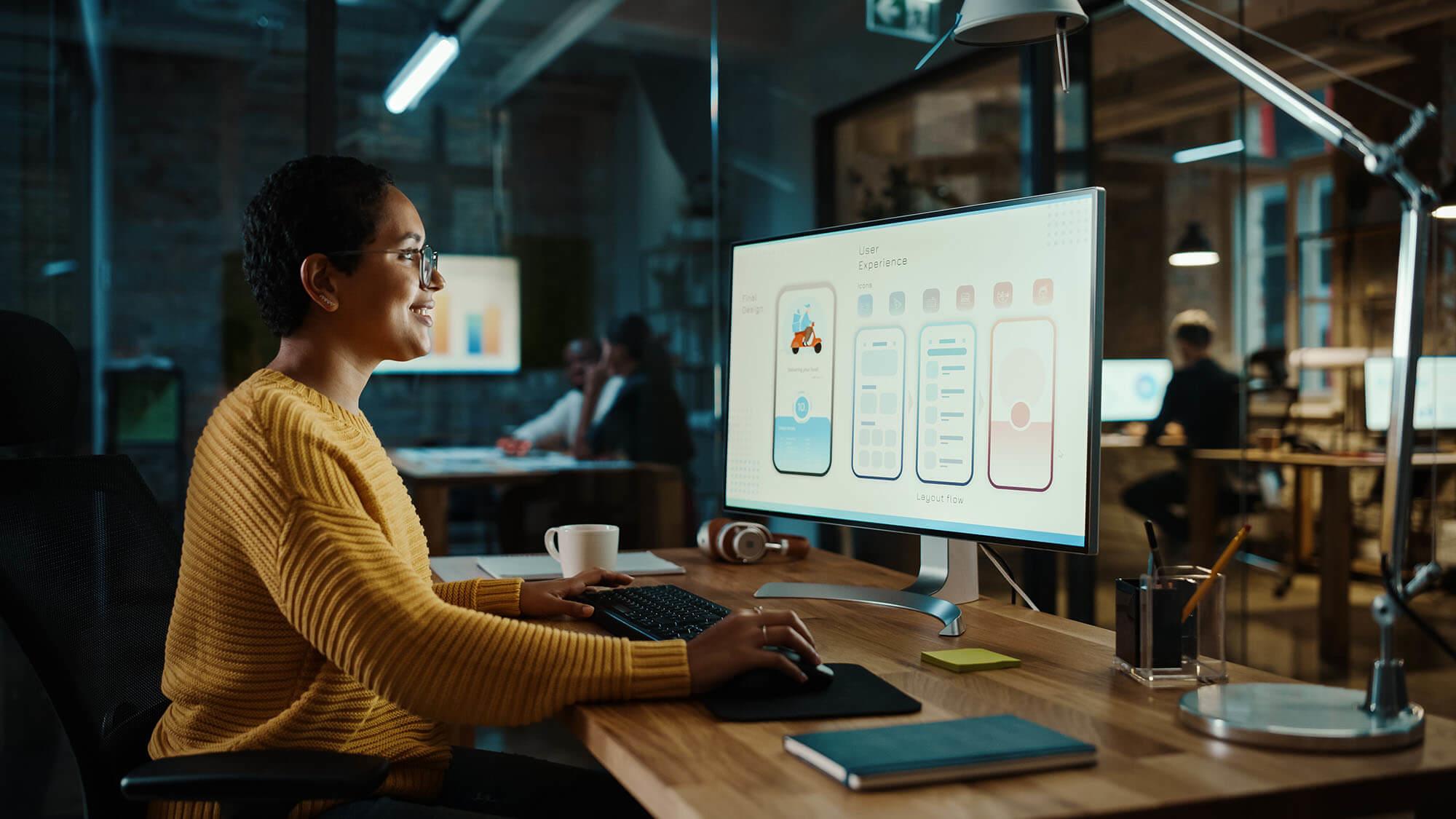The Most Effective Sorts Of Web Design to Enhance Customer Experience and Engagement
In the ever-evolving landscape of electronic communication, the performance of Web style dramatically affects individual experience and engagement. Various design approaches, such as minimal, receptive, and interactive formats, each offer distinct advantages that can deal with varied individual demands. Recognizing which types of Web style ideal offer these objectives can be critical for services aiming to improve client satisfaction and retention. The question stays: which design aspects genuinely reverberate with individuals and foster purposeful engagement? The exploration of these principles reveals crucial understandings that might redefine your method to website design.
Minimal Web Design
As digital landscapes come to be increasingly messy, minimalist Web layout has arised as an effective method to boosting individual experience. This layout approach prioritizes simpleness, concentrating on vital components while getting rid of unnecessary interruptions. By making use of enough white space, simple navigating, and a limited shade combination, minimal style promotes clarity and directs customer interest to essential content.
The core principle of minimalist website design is to create a seamless interaction for customers. By minimizing cognitive lots, customers can quickly comprehend details without feeling bewildered. This straight method not only enhances use however also urges interaction, as visitors are a lot more likely to check out a site that is simple and aesthetically attractive to navigate.
Furthermore, minimal style typically stresses typography and images, making use of these components tactically to communicate messages effectively. This focus on necessary parts can boost brand identification and develop an unforgettable customer experience. Basically, minimalist Web layout is not simply a trend; it is a thoughtful methodology that identifies the value of user-centered style. By removing extraneous components, developers can produce an extra appealing, reliable, and enjoyable Web experience for all customers.
Receptive Web Design
In today's diverse electronic atmosphere, receptive Web layout has actually become essential for producing a seamless user experience throughout a plethora of devices. As individuals access websites on smartphones, laptops, tablet computers, and desktops, the ability of a website to adjust its design and web content to different display sizes and resolutions is critical.
Receptive website design uses versatile grids, photos, and CSS media questions to ensure that Web material is presented optimally, despite the gadget utilized. This strategy not only boosts the aesthetic appeal of an internet site however additionally substantially enhances functionality. Users are more probable to involve with a site that supplies a regular experience, as it removes the frustration of needing to focus or scroll exceedingly.
By embracing receptive style, services can boost their presence and get to a broader audience. In recap, receptive Web style is a fundamental practice that enhances user experience, engagement, and overall contentment.
Interactive Web Style
Responsive website design lays the foundation for improving customer experience, however interactive Web style takes this a step further by engaging users in an extra vibrant way - Aligned Position Web Design. By integrating components such as computer animations, clickable prototypes, and real-time feedback, interactive Web design astounds users, drawing them right into a richer surfing experience
This technique not only promotes involvement but likewise encourages individuals to check out content actively instead of passively eating it. Methods such as gamification, where customers make rewards for completing jobs, can significantly improve the moment invested on a website and improve overall satisfaction. Furthermore, interactive functions can simplify intricate details, making it a lot more satisfying and absorbable.

Incorporating interactive design aspects can also result in higher conversion rates, as customers are more probable to engage with a website that proactively entails them. Aligned Position Web Design. Inevitably, interactive Web layout transforms user experiences into unforgettable trips, ensuring that site visitors return time after time
Apartment Style
Characterized by its minimalistic method, level design highlights simpleness and capability, removing unnecessary components and concentrating on necessary functions. This layout viewpoint focuses on usability, ensuring that users can browse user interfaces effortlessly and effectiveness. By using a tidy aesthetic, level layout removes the clutter usually found in a lot more elaborate designs, consequently enhancing user emphasis on material and capability.
The hallmark of level style depends on its use of vibrant shades, easy typography, and geometric shapes. These components add to an aesthetically enticing user interface that is both approachable and contemporary. Furthermore, level design fosters a sense of clearness, allowing individuals to determine necessary activities and info without interruption.
Furthermore, flat layout is specifically reliable in responsive Web style, as its simplicity equates well across various devices and screen sizes. By concentrating on important features, flat style not only fulfills user needs however additionally urges smooth communication, making it a vital component of effective Web layout techniques.
Adaptive Web Style
Flexible Web design tailors the user experience by producing several dealt with designs customized to different display sizes and gadgets. Unlike receptive layout, which fluidly changes a single design, adaptive layout uses distinct designs for certain breakpoints, making certain ideal discussion on various systems. This strategy enables developers to concentrate on the distinct qualities of each device, enhancing use by delivering exactly what users need based on their context.
Among the main benefits of adaptive website design is its capacity to enhance tons times and performance. By serving tailored content and photos that fit the customer's device, internet sites can minimize data usage and boost loading speeds. This is specifically useful for users with slower links or limited data strategies.

In addition, adaptive style helps with a much more constant and controlled branding experience. Because designers develop several formats, they can make sure look at here now that the visual elements line up with the brand name's identity throughout different systems - Aligned Position Web Design. This leads to a natural user experience, boosting engagement and promoting user retention
Verdict
In final thought, the assimilation of minimal, responsive, and interactive Web design concepts substantially enhances user experience and engagement. Minimalist layout promotes quality and focus, while responsive style ensures versatility across numerous tools, promoting ease of access. find more info Interactive design mesmerizes individuals with dynamic components, motivating exploration and personalization. Jointly, these style approaches add to the development of straightforward atmospheres that not only improve contentment however also drive higher conversion prices, emphasizing their important relevance in modern Web design techniques.
Minimal style cultivates clarity and emphasis, while responsive style guarantees versatility across various tools, advertising ease of access. Jointly, these layout comes close to contribute to the production of straightforward settings that not only improve fulfillment yet likewise drive greater conversion prices, emphasizing their crucial significance in contemporary Web style methods.